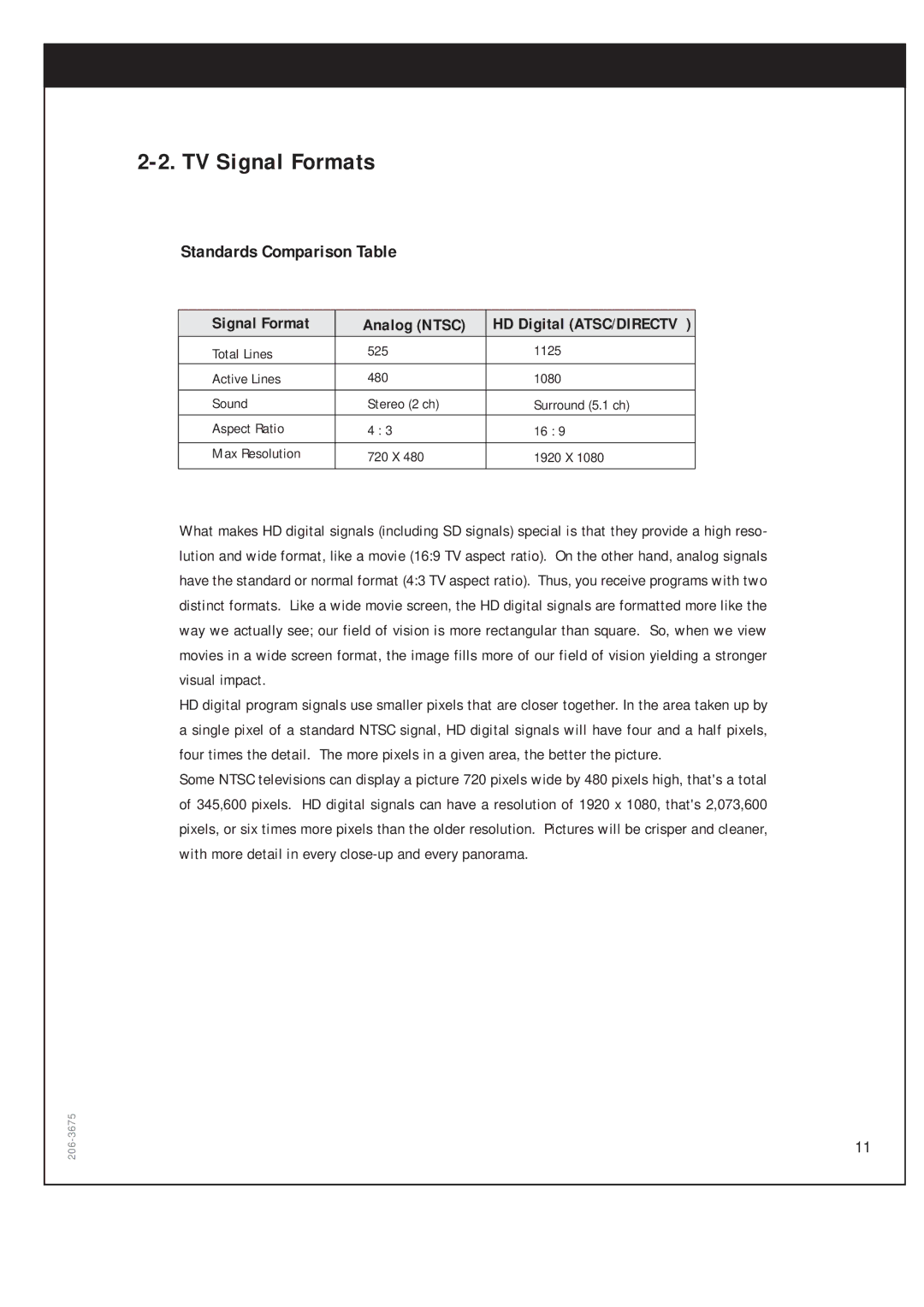
2-2. TV Signal Formats
Standards Comparison Table
Signal Format | Analog (NTSC) | HD Digital (ATSC/DIRECTV) |
Total Lines | 525 | 1125 |
Active Lines | 480 | 1080 |
|
|
|
Sound | Stereo (2 ch) | Surround (5.1 ch) |
Aspect Ratio | 4 : 3 | 16 : 9 |
|
|
|
Max Resolution | 720 X 480 | 1920 X 1080 |
|
|
|
What makes HD digital signals (including SD signals) special is that they provide a high reso- lution and wide format, like a movie (16:9 TV aspect ratio). On the other hand, analog signals have the standard or normal format (4:3 TV aspect ratio). Thus, you receive programs with two distinct formats. Like a wide movie screen, the HD digital signals are formatted more like the way we actually see; our field of vision is more rectangular than square. So, when we view movies in a wide screen format, the image fills more of our field of vision yielding a stronger visual impact.
HD digital program signals use smaller pixels that are closer together. In the area taken up by a single pixel of a standard NTSC signal, HD digital signals will have four and a half pixels, four times the detail. The more pixels in a given area, the better the picture.
Some NTSC televisions can display a picture 720 pixels wide by 480 pixels high, that's a total of 345,600 pixels. HD digital signals can have a resolution of 1920 x 1080, that's 2,073,600 pixels, or six times more pixels than the older resolution. Pictures will be crisper and cleaner, with more detail in every
11
